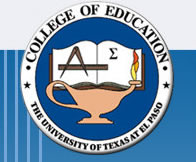
Bill Robertson, Ph.D. - Classes
Teacher Education Department
SCED 3311 - Curriculum Planning in Secondary Schools - Readings
Required
Brooks, J. G., & Brooks, M. G. (1999). In Search Of Understanding: The Case For Constructivist Classrooms. Alexandria, VA: ASCD.
McTighe, J., & Wiggins, G. (1998). The Understanding By Design Handbook. Alexandria, VA: ASCD.
Robertson, William H. (2008). Developing Problem-Based Curriculum: Unlocking Student Success Utilizing Critical Thinking and Inquiry, Kendall Hunt Publishing, Des Moines, Iowa
Additional
Integrating Technology into Instruction - This article outlines an instructional approach into five basic phases: planning, research, development, refinement, and implementation. These five areas work as organizational frameworks for instruction and learning, curriculum development and implementation, student progress and presentation. It also frames the use of computer technology tools with a specific purpose.
Critical Thinking Curriculum Model - The Critical Thinking Curriculum Model (CTCM) uses a multidisciplinary approach that integrates computer technology with effective learning and teaching practices. The CTCM approach provides students and teachers with a process and an opportunity to address current real-world issues. The model is designed to be flexible, an example for teachers to follow as they develop integrated curriculum focusing on their own critical issues.
Constructivism: From Philosophy to Practice - How we perceive knowledge and the process of coming to know provides the basis for educational practice. If we believe that learners actively construct knowledge in their attempts to make sense of their world, then learning will likely emphasize the development of meaning and understanding. Constructivists generally claim that knowledge is not discovered and that the ideas teachers teach do not correspond to an objective reality.
Syllabus | Schedule | Assignments | Readings | Evaluation | Samples

Bill Robertson, Ph.D. (robertson@utep.edu)
Teacher Education Department, College of Education, University of Texas at El Paso